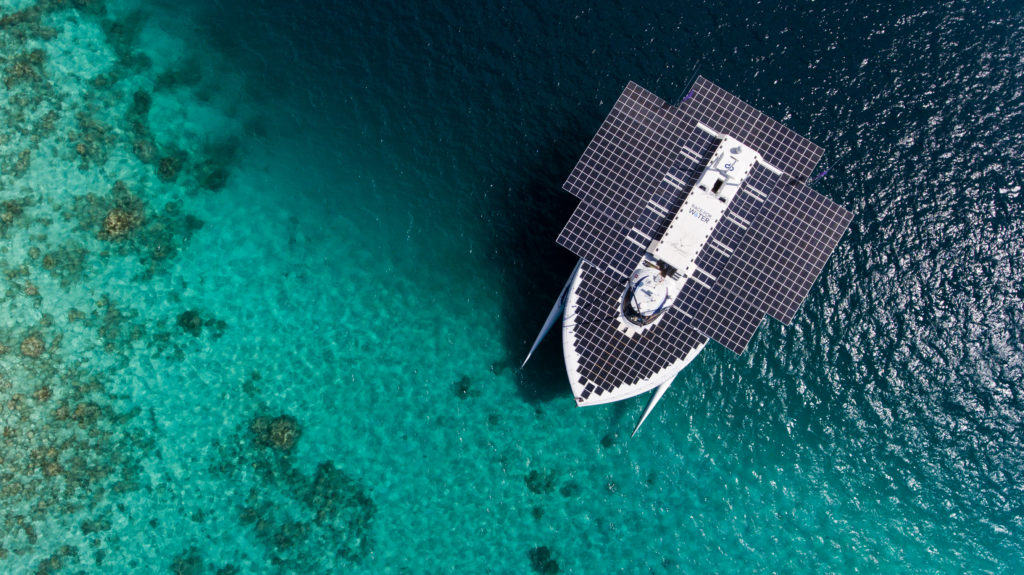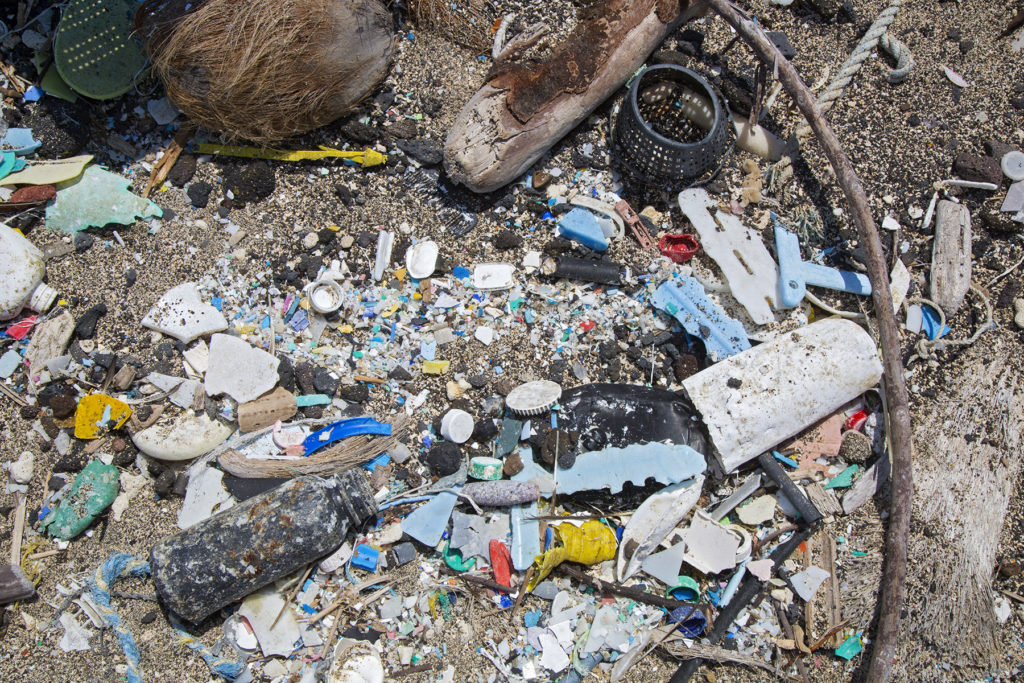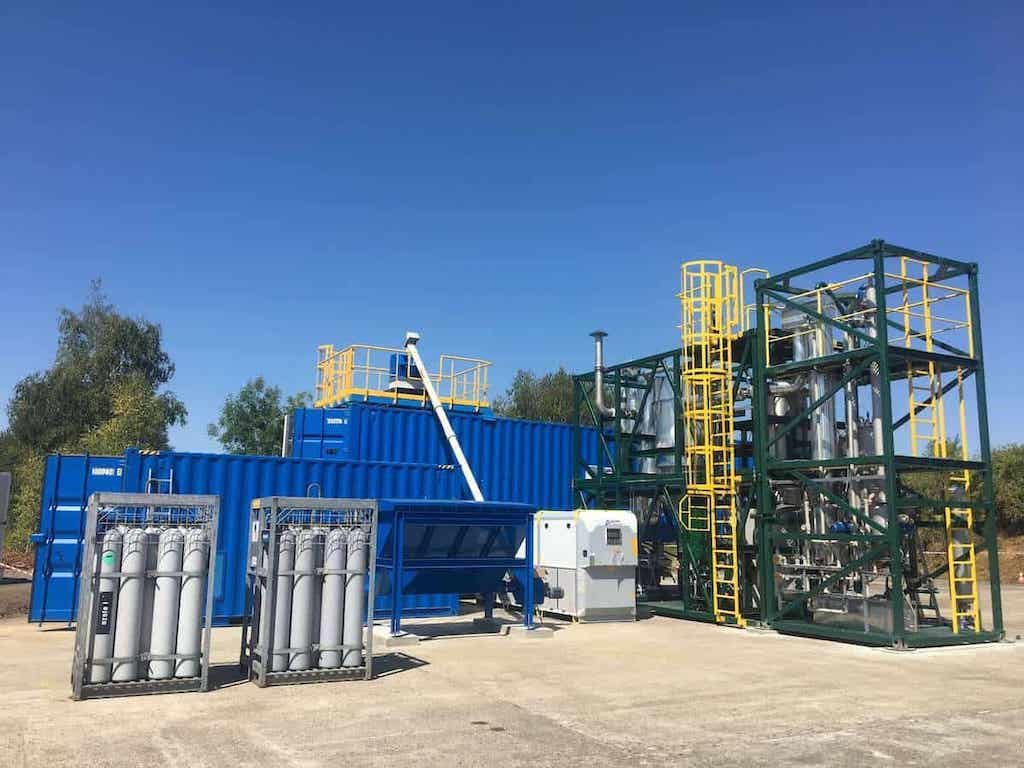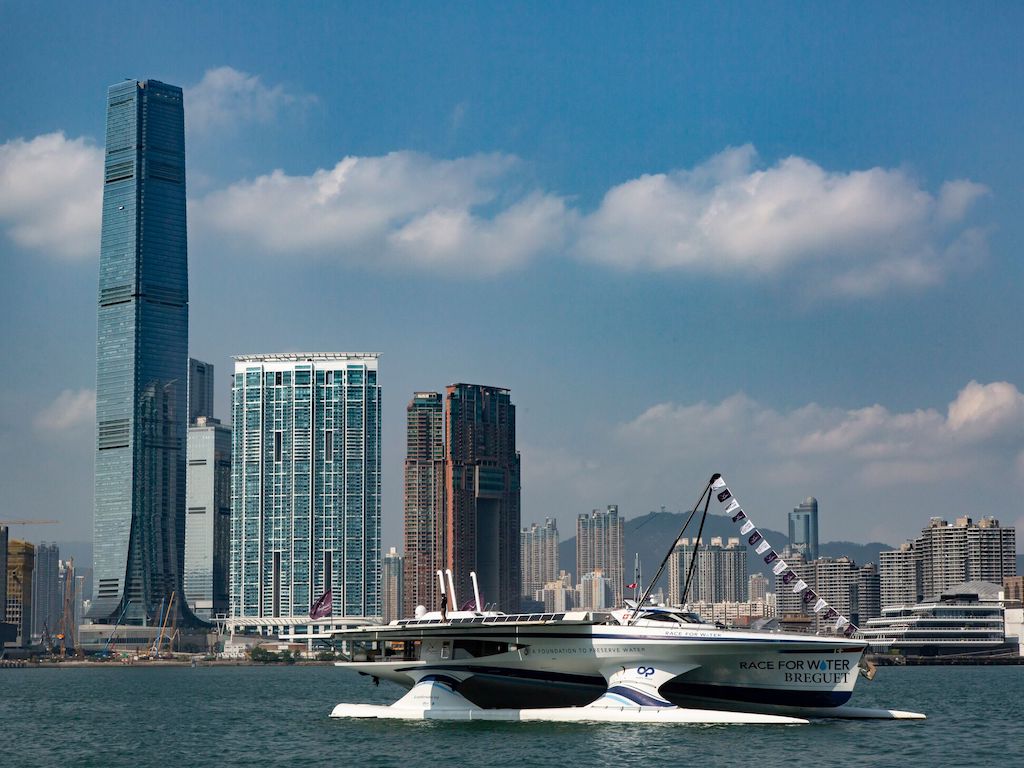Race For Water Zero Emissions Sustainably-Powered Vessel Lands in Hong Kong As Part of Global Fight Against Plastic
4 Mins Read
If you’ve been around the Central ferry piers lately, you may have noticed a large solar panel covered watercraft docked at Pier 9. Race For Water‘s ambassador vessel, which is 100% sustainably powered and boasts zero carbon emissions, is making its Hong Kong stopover as part of a 5 year expedition around the world. Race For Water is a European foundation dedicated to preserving the world’s oceans from plastic pollution. The organisation founded in 2010 completed their first round-the-world odyssey in 2015, with a goal of collecting data and making a global assessment on the marine plastic pollution crisis. Now on their second expedition, Race For Water’s plan is to stopover in 35 locations globally over 5 years. The team, comprised of engineers, scientists and activists, is looking to raise awareness and identify and implement local solutions to fight plastic pollution. Part of that involves showcasing their unique plastic to energy waste-fighting solution. turning plastic waste into energy.
Setting sail from Lorient in France in 2017 for its 5-year navigation around the world, the Race For Water vessel is now berthed here in Hong Kong’s Central Ferry Piers for its 22nd stopover until November 9th. During the stay, the vessel will host educational events for schools and organisations to highlight the need to collaboratively tackle the complex issue of plastic waste.
Race For Water also hosted a multi-stakeholder industry workshop on “Plastic Waste to Energy,” attended by Hong Kong’s key governmental leaders, decision-makers, business leaders, NGOs and influencers including the Green Queen team.
The workshop involved a visit on the vessel to learn about its pioneering energy systems and zero emissions setup, presentations by the Hong Kong government’s EPD, Ocean Recovery Alliance’s Doug Woodring and an in-depth look into BIOGREEN, a turnkey solution developed by the Race for Water foundation in collaboration with European scientists to revolutionise our current plastic waste management system by turning collected plastic waste into usable energy.

In 2015, the organisation took their ambassador vessel – which is a 100% self-sustainable vessel powered by over 500 square metres of solar panels, a kite wing for wind energy and hydrogen from water – on its first global trip to conduct a worldwide situational analysis of macro-debris and microplastic pollution.
The container-based self-sustainable system can turn all types of collected plastics into useful electricity whilst generating only about 5-10% of final waste from the incoming plastic free volume, and is compliant with European Union emissions standards, a key solution to combat the issues of collection and sorting in the plastics supply chain, as the current recycling model only takes back around 15-20% of plastic.

So how does it work? All types of plastic that have been treated for contamination are crushed them into small pieces and heated to 800 degrees celsius, the optimal temperature to convert plastics to synthesis gas. This “syngas” is then filtered for purification and goes through a condensation process before the final product can be used as fuel in engines to produce electricity. Furthermore, though the system does produce some waste residue, including 3% of char, this is self-contained safely and pales in comparison to the toxic byproducts of existing plastic recycling plants that remain mostly unregulated.
The system is able to treat 5-12 tonnes of plastic waste daily, which equates to the waste produced by a population of almost a quarter of a million. Per ton of plastic waste can produce as much as 2.5 megawatts, enough to cover the needs of 6,000 households.
While the solution will cost US$4 million, it pales in comparison to the cost that one BIOGREEN “plant” would save. According to a Plymouth University marine study in May 2019, ocean plastic pollution costs up to US$2.5 trillion annually, and this does not yet take into account the cost of the direct and indirect impacts on human health. Race For Water in collaboration with researchers from the University of Bordeaux provided data for a study that found a link between microplastics and toxic effects on fish cells, larvae and juveniles – suggesting that actual figures of the cost of plastic pollution when taking into account the health implications could be much higher.

Not only does BIOGREEN bring economic advantages by providing electricity byproduct and jobs (each separate system employs around 8 people), it is also easy to mobilise and quick to install thanks to its container-based design, making it ideal for countries that do not yet have the adequate recycling infrastructure to handle large amounts of plastic waste. Developing countries in Asia including Malaysia, Indonesia and the Philippine, have borne the brunt of the waste crisis after China banned foreign waste imports at the end of 2017.
As the Race For Water research project continues its educational journey around the world, the team hopes to continue to raise awareness about the global plastic waste crisis and the health and environmental threats to our collective future therein. By engaging local communities and stakeholders in multi-layered discussions backed with presentations of concrete solutions, they hope to make real and measurable impact.
Lead image courtesy of Race For Water.




